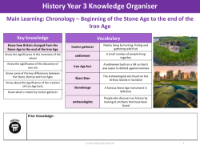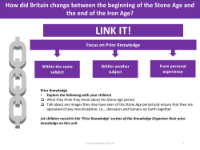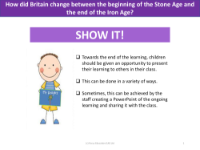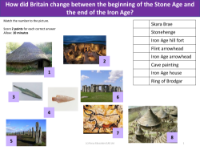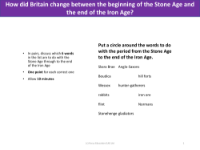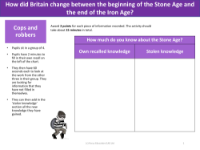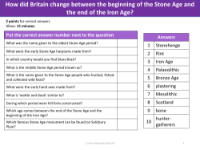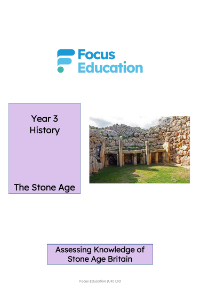Five things I know about the Stone Age and the Iron Age
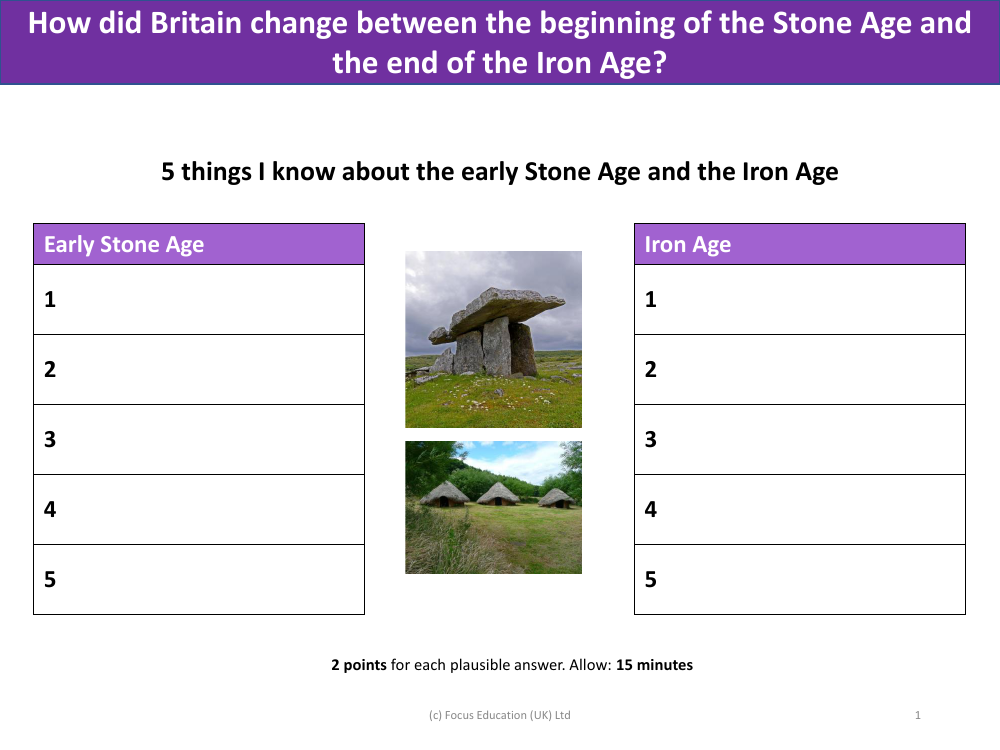
History Resource Description
During the early Stone Age, which is also known as the Paleolithic period, early humans were predominantly hunter-gatherers, relying on hunting wild animals and foraging for food to sustain themselves. They crafted simple tools and weapons from stone, wood, and bone, which marks the first known use of technology by hominids. The social structures of these early societies were likely based on small, nomadic bands or tribes. Art also emerged in this period, with cave paintings and carvings found in several locations, indicating a development in culture and communication. Lastly, the control of fire was a significant milestone, providing warmth, protection, and a means to cook food, which had a profound impact on early human life.
Transitioning to the Iron Age, this period saw significant advancements in technology, with the discovery and use of iron to create tools and weapons that were stronger and more durable than their stone or bronze counterparts. Agriculture became more sophisticated, with the introduction of iron ploughs improving farming efficiency, leading to the development of permanent settlements. Societal structures evolved into more complex hierarchies, including the emergence of chieftains and kings. The Iron Age also saw the construction of hill forts and defensive structures, reflecting territoriality and the need for protection against rival groups. Lastly, the period was marked by the spread of the Celtic culture across Britain, with its distinct language, art, and social structures influencing the region profoundly.
Between the beginning of the Stone Age and the end of the Iron Age, Britain underwent transformative changes. The progression from a nomadic lifestyle to settled agricultural communities marked a significant shift. Technological advancements from simple stone tools to sophisticated iron implements allowed for more efficient farming, warfare, and everyday life. Social structures evolved from small, family-based groups to complex societies with defined leadership and social stratification. The development of permanent settlements and defensive structures like hill forts indicated a move towards territoriality and organised communities. Culturally, the arrival of the Celts introduced new languages, artistic styles, and religious beliefs, shaping the identity of ancient Britain.

